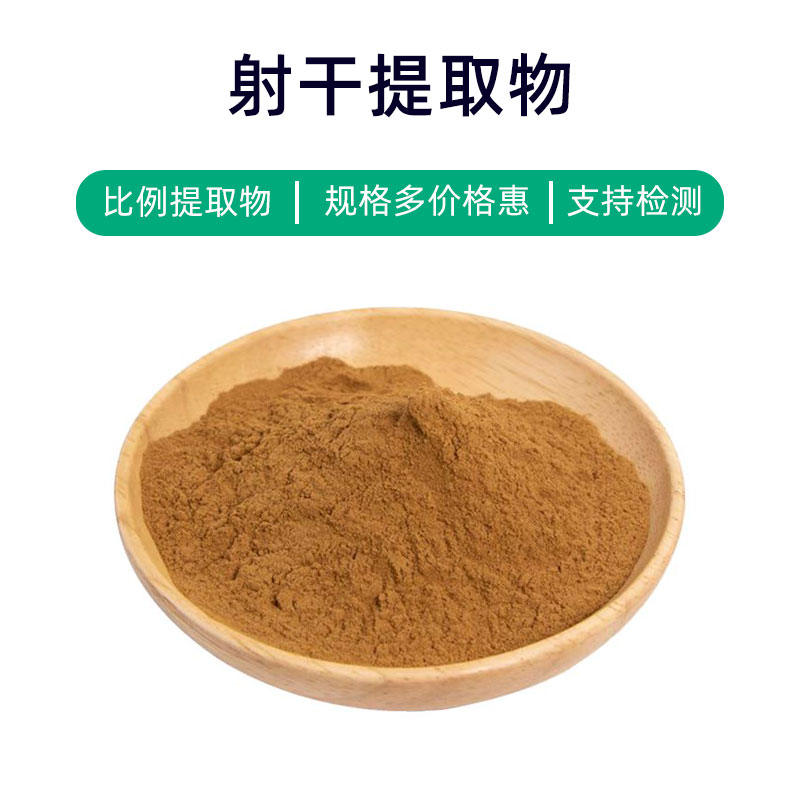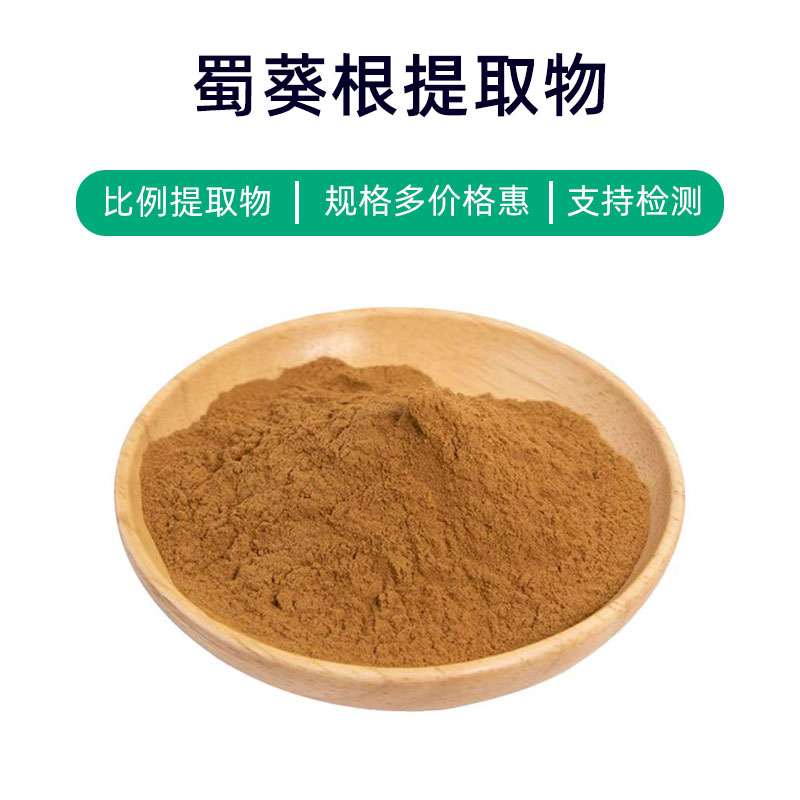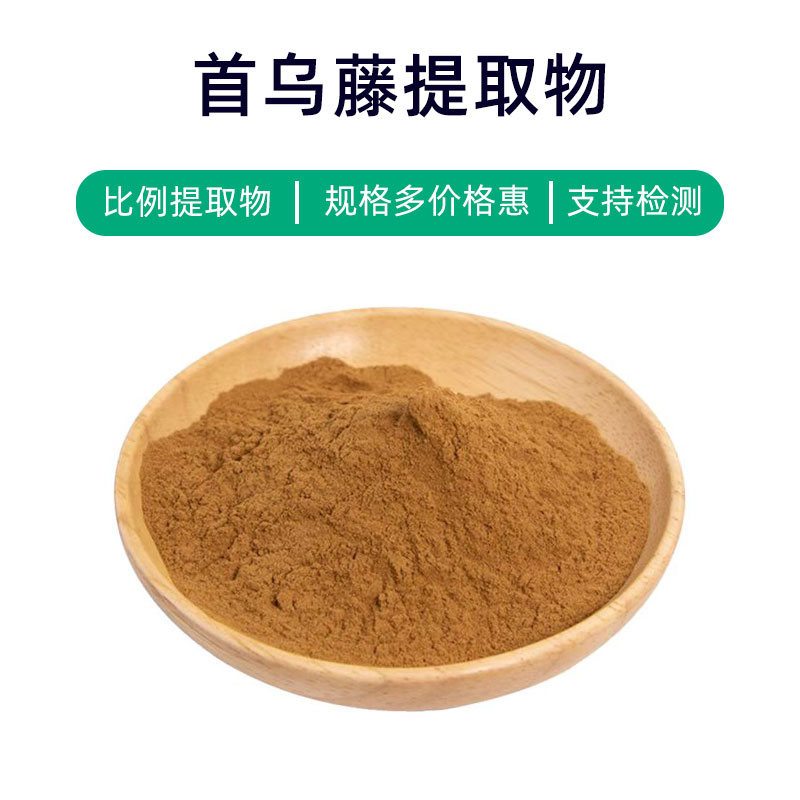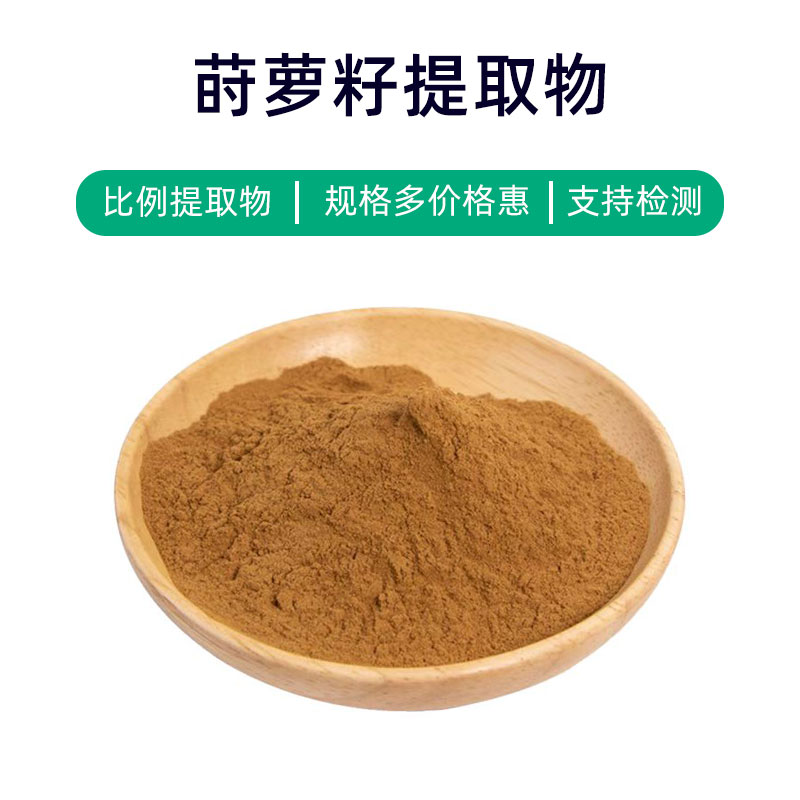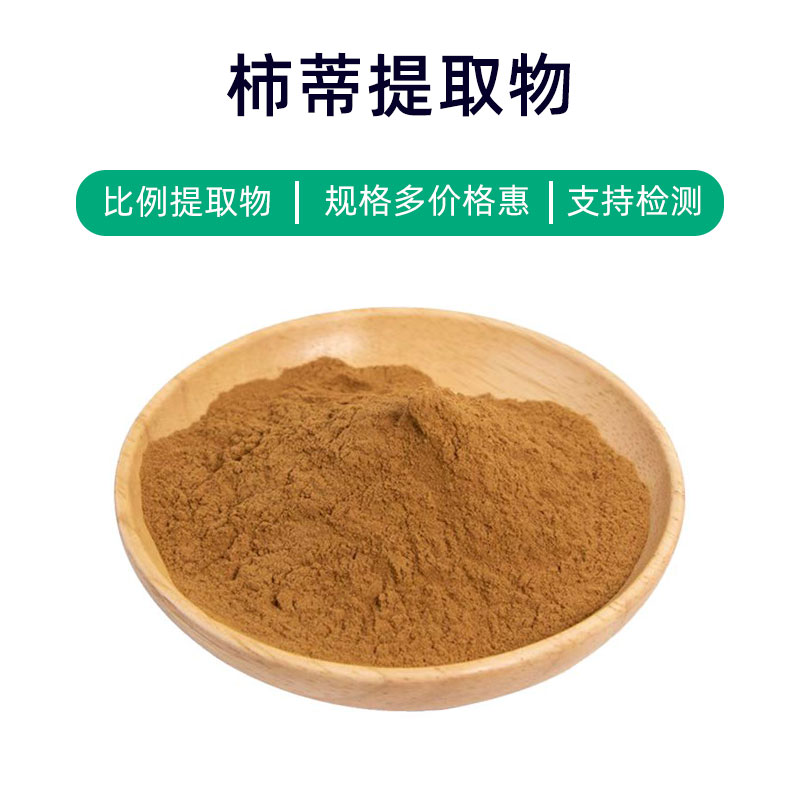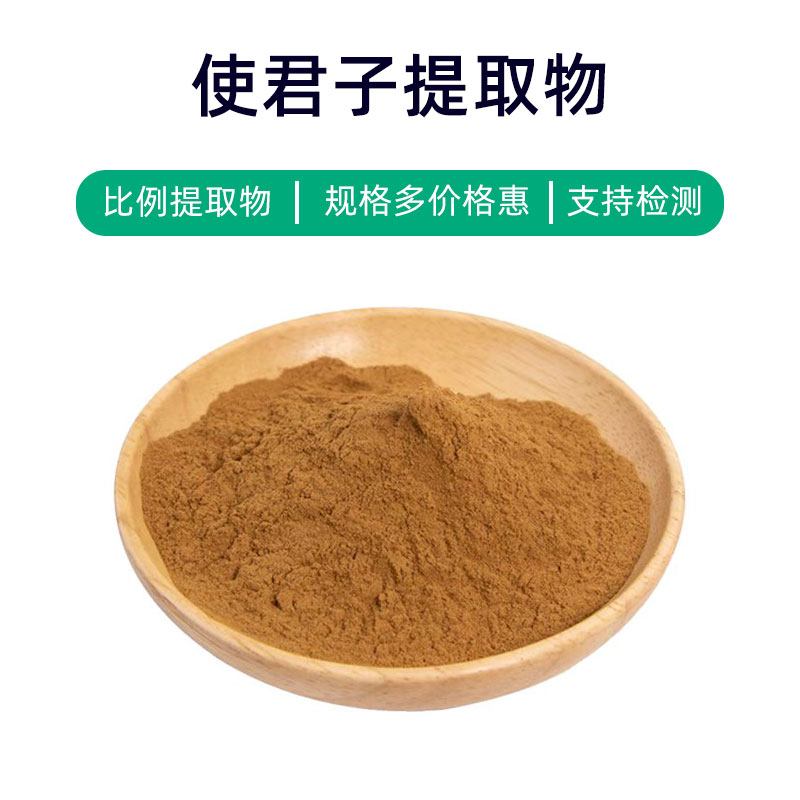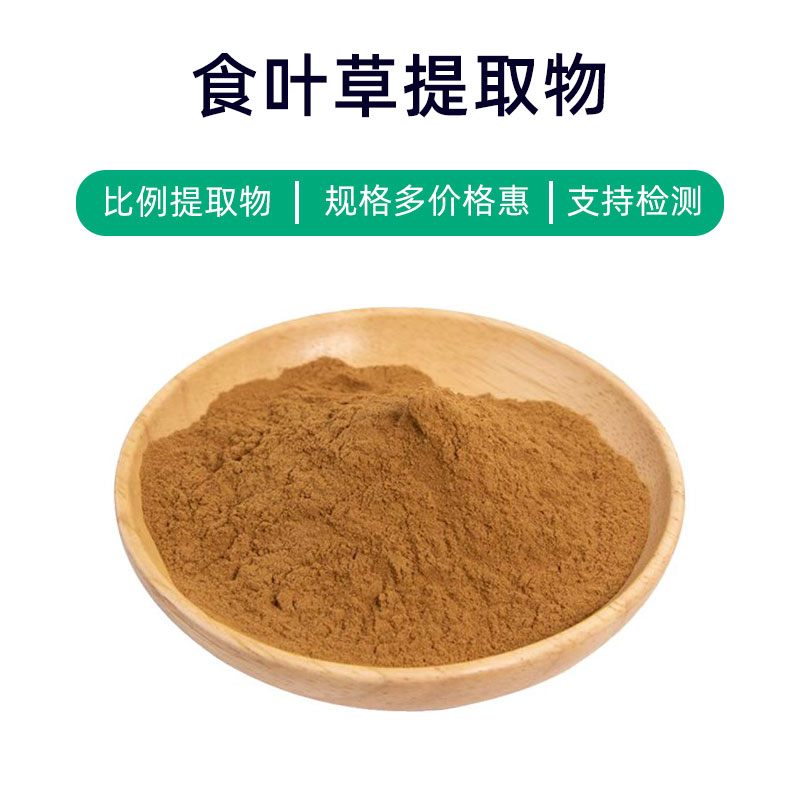Epimedium Extract Product Introduction
Epimedium extract is a natural medicinal component derived from the Epimedium plant. Its main constituents include flavonoids, terpenes, polysaccharides, and other active substances. These components give the Epimedium extract various effects and a wide range of applications.
Epimedium extract is widely used in traditional Chinese medicine formulations and health products. It is rich in flavonoids, which are known for their significant effects on enhancing immunity, improving sexual dysfunction, and promoting blood circulation. In traditional Chinese medicine, Epimedium extract is commonly used to nourish the kidneys, strengthen the waist and knees, and replenish vital energy. Additionally, it is used in men's health products to improve sexual dysfunction and enhance physical vitality.
In the food sector, Epimedium extract is also used as a food additive commonly found in health foods and functional foods. It helps regulate endocrine function, boosts stamina, and promotes health, making it popular among consumers.
Overall, Epimedium extract offers various benefits, including boosting immunity, improving sexual function, and promoting blood circulation, and is widely used in traditional medicine, health products, and the food industry, making it a promising natural medicinal component.
Epimedium Extract Production Process
The production process of Epimedium extract typically includes the following main steps:
- Raw Material Preparation: First, fresh Epimedium plants are selected as the extraction source. These plants are usually harvested during the growing season and undergo cleaning and impurities removal to ensure purity and quality.
- Crushing and Grinding: The prepared Epimedium plants are crushed and ground to increase extraction efficiency, making it easier to obtain active components.
- Extraction Process: The ground Epimedium plants undergo extraction, commonly using methods such as water extraction, alcohol extraction, or supercritical fluid extraction. Among these, water extraction is common, involving soaking the crushed Epimedium in a suitable amount of heated water to extract water-soluble components.
- Concentration Treatment: The extracted liquid is concentrated to remove moisture, yielding a relatively concentrated solution of Epimedium extract. During this process, temperature and pressure must be controlled to ensure the stability and effectiveness of the active components.
- Filtration and Purification: The concentrated solution is filtered and purified to remove impurities and unwanted substances, retaining the target active ingredients.
- Drying and Powdering: The purified Epimedium extract solution is dried to remove moisture, resulting in a dry extract. The dried extract is usually ground to achieve the desired particle size.
- Quality Testing: The prepared Epimedium extract undergoes quality testing, including active ingredient content, microbiological testing, and harmful substance detection like heavy metals, to ensure the product meets relevant quality standards and safety requirements.
- Packaging and Storage: After quality testing is complete, the Epimedium extract is packaged, commonly using sealed or vacuum packaging to ensure long-term storage and stability.
The production process of Epimedium extract requires strict control of each step to ensure product quality and stability, ensuring the effectiveness and safety of the active components.
Benefits and Side Effects of Epimedium Extract
As a natural plant extract, Epimedium extract has a wide range of applications in medicine and health, boasting various effects and benefits. The main benefits and effects of Epimedium extract include:
- Antioxidant Effects: Epimedium extract is rich in antioxidants, such as polyphenols and flavonoids, effectively neutralizing free radicals and protecting cells from oxidative damage, helping to slow the aging process.
- Immune Regulation: The active components in Epimedium extract have immune-regulating properties that can enhance immunity, improving resistance to infections and disease.
- Anti-inflammatory Effects: Some components of Epimedium extract have anti-inflammatory properties, capable of inhibiting inflammatory responses and alleviating symptoms of inflammation, being particularly helpful for rheumatic diseases and skin inflammation.
- Digestive Promotion: Epimedium extract contains a wealth of dietary fibers and enzymatic substances that can promote gastrointestinal motility, improving digestion and alleviating issues like indigestion and constipation.
- Blood Sugar Regulation: Some studies suggest that Epimedium extract has a blood sugar-lowering effect that may assist in regulating blood sugar levels, providing some supportive effects for individuals with diabetes.
- Blood Pressure Reduction: Certain components of Epimedium extract have vasodilatory and blood pressure-lowering effects, which could be beneficial for individuals with hypertension.
- Improved Sleep: Some components of Epimedium extract have calming effects that can help improve sleep quality and alleviate insomnia and anxiety.
Epimedium extract is generally safe with a low incidence of side effects. However, individual differences and excessive dosage may lead to mild discomfort, such as digestive upset or allergic reactions. Therefore, it is advised to follow medical guidance during use, monitor for appropriate dosage, and avoid excessive or prolonged use to ensure safety and efficacy. If any discomfort or allergic reactions occur, discontinue use and consult a medical professional.
Application Scenarios and Dosage of Epimedium Extract
Epimedium extract is a versatile natural plant extract widely used in medicine, food, and cosmetics. Here are the main application scenarios and dosages:
- Medical Applications:
Epimedium extract has various applications in medicine, primarily including:
- Antioxidant and Immune Regulation: Commonly used to formulate health products or medications aimed at boosting immunity and delaying aging.
- Anti-inflammatory and Anti-inflammatory: Used to treat inflammatory diseases such as rheumatoid arthritis.
- Blood Sugar and Blood Pressure Regulation: Some studies indicate Epimedium extract helps regulate blood sugar and blood pressure, assisting in treating diabetes and hypertension.
- Digestive Promotion: Moderate doses of Epimedium extract can help stimulate gastrointestinal motility and improve digestive function.
Dosage: Generally, the common methods of use are oral or topical. For oral intake, it is recommended to take 5-10 grams per dose, 1-3 times a day, with dosage adjusted based on individual needs and medical advice. For topical application, the appropriate amount can be directly applied to the skin, massaged gently until absorbed.
- Food Applications:
In the food sector, Epimedium extract serves as a health food additive to enhance nutritional value and functionality.
- Antioxidant: Frequently used in foods designed to have antioxidant effects, such as functional beverages and health products.
- Flavoring Agent: Can enhance the flavor and taste of foods, such as teas and pastries.
Dosage: The addition of Epimedium extract in food should be adjusted based on the product type and manufacturing process, with a general recommendation of adding 10-20 grams of extract per 1000 grams of food.
- Cosmetic Applications:
Epimedium extract is commonly used in skincare and anti-aging products, offering certain beauty benefits.
- Moisturizing and Antioxidant: Helps maintain skin moisture and elasticity, delaying skin aging.
- Skin Conditioning: May alleviate skin issues such as inflammation and allergies.
Dosage: The addition of Epimedium extract in cosmetics is usually low, generally according to the specifications in the product formula, adjustable based on individual needs.
Overall, the use of Epimedium extract in various fields should be tailored to specific conditions and product formulations, ideally under the guidance of a doctor or professional to ensure safe and effective usage.
Introduction to the Source Plant of Epimedium Extract, Distribution, and Growth Environment
The source plant of Epimedium extract is the Epimedium (scientific name: Polygonum cuspidatum), also known as Japanese knotweed, belonging to the knotweed family. Here is an introduction to the Epimedium plant, its distribution, and growth environment:
- Plant Introduction:
Epimedium is a perennial herbaceous plant with upright stems that can reach heights of 1-3 meters. The leaves are oval or lanceolate with serrated edges and have long petioles. The flowers are small and densely clustered, appearing green or light pink. The fruits are triangular achenes. This plant has a well-developed root system and grows vigorously. - Distribution:
Epimedium is primarily distributed in Asia, including China, Japan, and Korea, and is also found in Europe, North America, and Australia. In China, Epimedium is widely distributed in regions south of the Yangtze River, including provinces such as Jiangsu, Zhejiang, Fujian, Guangdong, and Guangxi. - Growth Environment:
Epimedium prefers warm and humid environments, typically found along riverbanks, creeks, fields, hills, and forest edges, especially in moist soil. It has moderate light requirements but thrives in ample sunlight. Its soil adaptability is strong, growing well in acidic, neutral, or alkaline soils, but it is best suited for well-draining soil. - Growth Characteristics:
Epimedium is a vigorous grower, with rapid growth. Under favorable conditions, full growth seasons will see abundant stems and leaves, with a well-developed root system. It can spread through underground rhizomes, forming large communities of stems and leaves. The growth cycle of Epimedium is long, exhibiting strong adaptability and vitality.
Overall, as the source plant of Epimedium extract, Epimedium has a wide distribution and a robust growth environment, thriving in various regions, and its root and rhizome parts are the main sources for extracting Epimedium extract.
Processing and Storage of Epimedium Extract
The processing of Epimedium extract typically includes the following steps: First, mature Epimedium plants are harvested and subjected to preliminary processing, such as cleaning and chopping. Then, extraction is conducted, commonly using water extraction or ethanol extraction. Next, the solution obtained from extraction undergoes concentration, filtration, and drying to ultimately yield the Epimedium extract. For storage, it is essential to keep Epimedium extract in a dry, cool environment, avoiding direct sunlight and high temperatures, while sealed storage can extend its shelf life. Common packaging methods include aluminum foil bags and plastic bottles, with attention paid to moisture and UV protection.
Monica Sun is a seasoned expert in the plant extraction industry with over a decade of experience in research and production. She specializes in the extraction and purification of plant active ingredients, focusing on driving innovation in natural product applications. Monica has participated in the development of multiple functional plant extracts, delivering high-value natural raw material solutions for the health food, pharmaceutical, and dietary supplement sectors.

